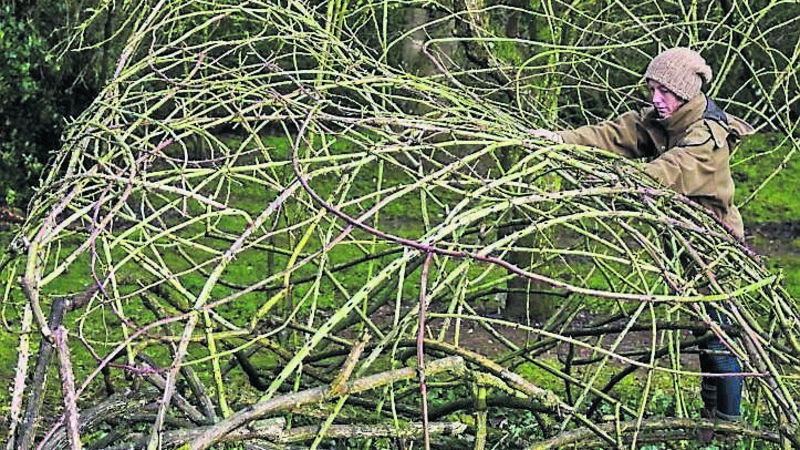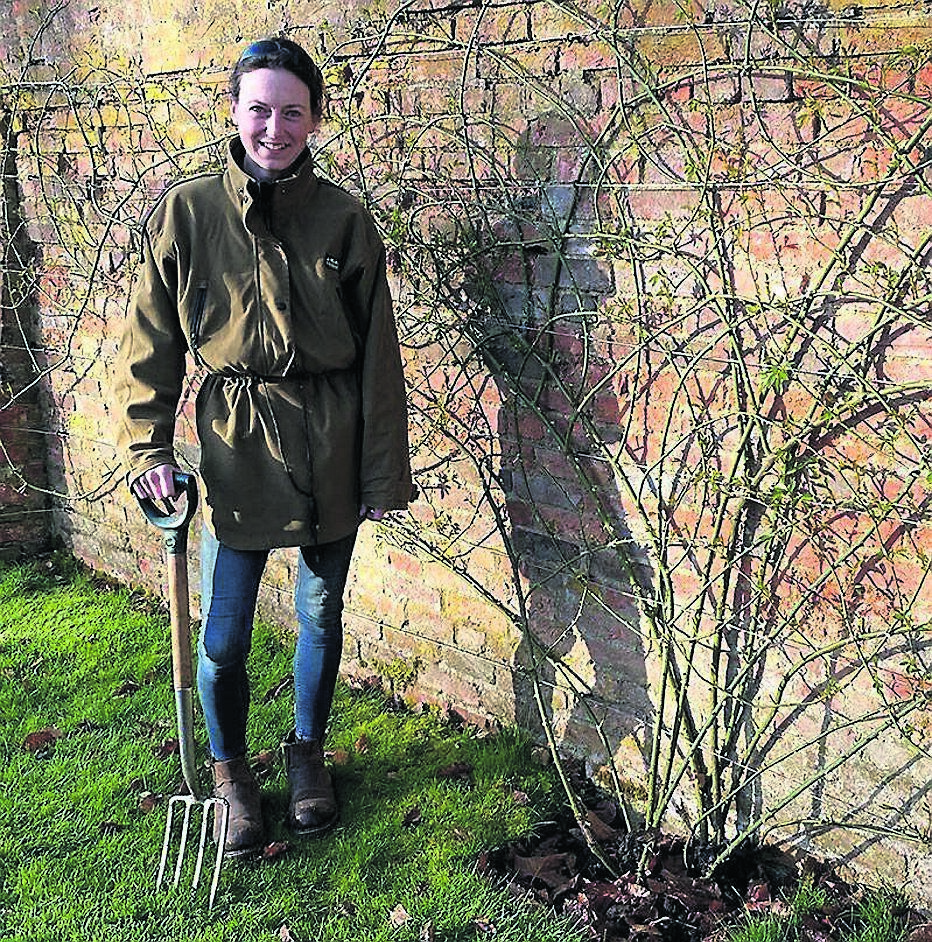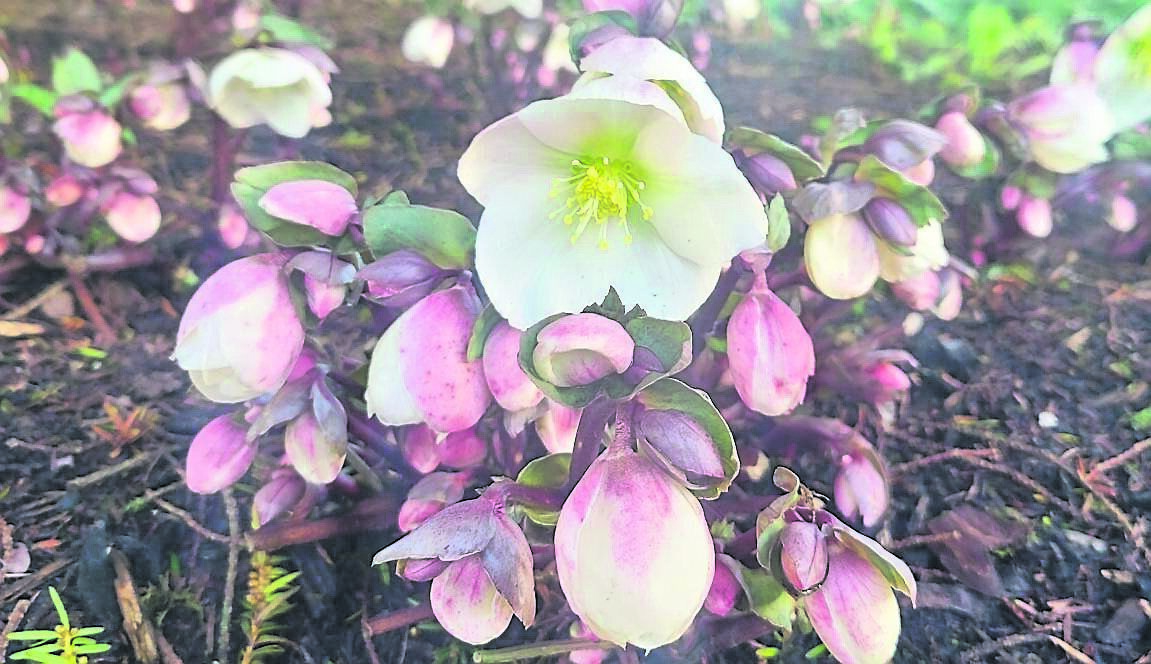How to turn your roses into a work of art!

Jenny Barnes, the head gardener at Cottesbrook Hall in Northamptonshire, England, with one of her sculptural rose creations
LOOKING out of the window this morning at a countryside covered in a blanket of white frost, it is a seasonal picture, appropriate for this time of year, and a comfort to finally see a few nights of temperatures below freezing.
Good, hard frosts are healthy at this time of the year when deciduous plants are dormant, it is later in spring when buds are about to burst that frosts can cause serious damage to new plant growth.
The frosts also help with eliminating pests and diseases, killing off any overwintering eggs of slugs and other undesirables that may damage plants once growth starts in spring.
It is true that the frosts can damage tender plants such as bananas, cannas and some palms and ferns, and so it is wiser to take these special tender plants indoors for the winter months to avoid disappointment.
Our climate is most certainly changing, with less definition or certainty of the seasons. This makes growing plants more challenging, as there is less certainty with the weather, but as places in the world go, we in Ireland are very lucky with our temperate climate overall.
Our temperatures in summer do not vary wildly from our winter temperatures, and this provides some stability for plant growth and establishment, and gives us a pretty lengthy growing season also.

It can be tempting during a cold spell to walk on beds, but compaction can result even when the ground is frozen, so be mindful of this in the garden during winter.
At this time of year, it is best to work from the paths if possible, and if you’re working on beds then to use planks of timber to spread the weight across an area.
It is a good time to prune roses of all descriptions and a recent Gardeners World episode featured some unusual rose pruning, which entailed training the stems in circular patterns tied in against a wall, which looked great in the winter and ultimately results in more flowers as tying the stems across the wall instead of allowing upward growth encourages more blooms.
Jenny Barnes, the head gardener at Cottesbrook Hall Gardens in Northamptonshire, England, is practicing this type of rose training and has created some artistic pieces throughout the gardens. They include globes, free-standing structures, lattices and delicious shapes against walls and hedges.
Jenny recommends starting with a rambler or climbing rose growing against a wall for the best scope with stem length, and begin by cutting away any stems that are not to be used - these would include stems growing outward from wall, stems thinner than a knitting needle, and anything that is dead, diseased or damaged.
A good general rule when pruning is that the weaker the growth, the harder it needs to be pruned in an effort to encourage healthier new growth.
Circles feature widely in Jenny’s creations, beginning with tying in and creating some circular shapes, and then filling in any empty space around them with further circles.
It looks great and is such a good idea to maximize on space and flower, creating interesting patterns with plant material and increasing flowering potential - what is not to like!
Perhaps thorns! Jenny does not wear gloves for this job, instead wrapping her fingertips with plasters before beginning the job. It is a labour of love and a great idea this January to inspire getting that rambler under control and having a go at something different.
Leather gloves may be an option for the job as well as a well-sharpened secateurs and some gardening twine.
It is essentially creating artwork using roses in the garden, and may require some effort at the initial stages to create the shape but it makes a great diversion from the fan or espalier shapes and it is a bit of fun as well.
Wisteria will benefit from some pruning now also, the rule of ‘2 in 2 and 7 in 7’ in relation to the months of the year can be applied in the next few weeks. Namely, a more severe prune back to two buds in February and a light prune after flowering to seven buds in July, which will help to keep the whippy growth in check.
Pruning now will tidy up the climber before the growing season begins, the plant can be tied into any support that it may be growing along, and the pruning will ensure that the flowers will not be obscured by foliage when they appear in May.

Without a doubt, pruning is one of the most important jobs to complete in the garden during the winter months.
At this time of the year, the garden is stripped back to the bare bones, making it easier to see where requires attention and where gaps exist.
Pruning is essential to keep the garden under control, but also for the health of plants, it encourages new growth, enables damaged and dead material to be removed, and pruning done at the right time will encourage better flowering and overall growth.
At this time of the year, the soil can be saturated or frozen, making it impossible to work, and so it is best to turn our attentions elsewhere rather than damage the structure of the soil.
Plant of the Week
Helleborus ‘Winter Moonbeam’ is looking very pretty right now as it emerges from the soil, the flower buds are nodding and the outside of the petals are coloured pink, opening to white.
These plants are such heroes at this time of the year, when we need something to cheer us along.
It’s best to cut the old foliage off so that the flower display can be enjoyed to the fullest.







 App?
App?


